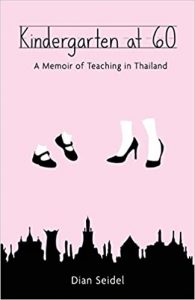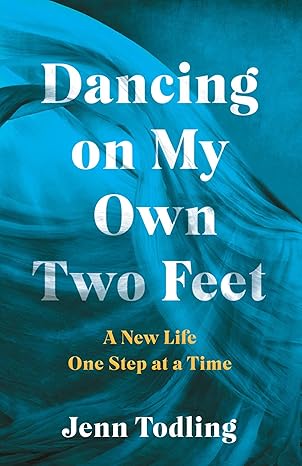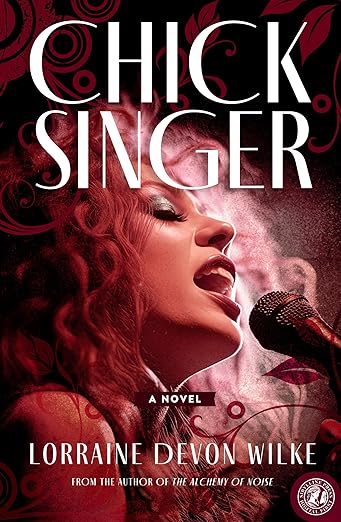Ten Lessons about Writing Memoir that I Learned from Reading Memoirs
Ten Lessons about Writing Memoir that I Learned from Reading Memoirs
Dian Seidel
 Memoirs never appealed to me much…until I accidentally started writing one. When a writing coach told me my short essays could be the basis for a memoir, I figured I’d better educate myself about the genre.
Memoirs never appealed to me much…until I accidentally started writing one. When a writing coach told me my short essays could be the basis for a memoir, I figured I’d better educate myself about the genre.
So I read lots of memoirs, and I learned lots of lessons—about the authors, about how to write memoir, and about how wrong I was to have avoided memoirs for so long. Here are ten memoirs I love and a lesson each taught me.
Lesson 1: Memoirs about ordinary lives can inspire
The Road from Coorain – Jill Ker Conway, 1989
Best-selling memoirs these days seem to fall into two categories. Either the author is already a public figure, or the story involves some form of jaw-dropping trauma, or both. Not so for The Road from Coorain, Jill Ker Conway’s memoir of her WWII-era girlhood in Australia and subsequent path toward a career in academia.
Conway’s chronicle of her family’s struggles to eke out a living on a remote sheep station and the discrimination she faced as a young woman in male-dominated academic circles succeeds because it’s relatable. With true-to-life interpersonal relationships and insightful observations about mid-20th century Australia, The Road from Coorain taught me that a memoir can inspire when it lets readers put themselves in the author’s shoes, even if those shoes haven’t played on center court or danced on Broadway.
Lesson 2: A baffled memoirist can take readers on a journey of discovery
Mai Pen Rai Means Never Mind – Carol Hollinger, 1964
One of the first memoirs I read was Carol Hollinger’s story of her years teaching English in Thailand, which I devoured as I was preparing to do the same thing. Though Thailand and the wider world had changed enormously in the six decades separating Hollinger’s adventure from mine, I found Mai Pen Rai Means Never Mind engrossing and encouraging.
Hollinger’s willingness to admit her initial befuddlement with both traditional Thai culture and the U.S. expat community was heartwarming. I felt a sort of sisterly affection for this self-described American “matron” trying to balance raising a family, running a household, fulfilling social obligations, and, oh yes, teaching English at one of Thailand’s premier universities. With a refreshing openness of mind and spirit, she eventually becomes comfortable with Thai people and conversant with their history, religion, and customs. By reading her book so did I.
Lesson 3: A deep dive into a personal interest can enrich a memoir
H is for Hawk – Helen Macdonald, 2016
In her story about training a goshawk named Mabel while mourning the death of her father, Helen Macdonald weaves in her analysis of T.H. White’s life and writing. White, who died before MacDonald was born and who also tried to train a goshawk, is probably best known for his novelizations of the Arthurian tales, including The Once and Future King, which I happen to love.
Which of these threads is the main story? That’s up to the reader to decide. I enjoyed Macdonald’s deep dive into falconry, a topic I knew little about, as much as her elucidation of White’s life and work. And I eventually understood how these two passions helped her come to terms with the loss of her parent. H is for Hawk taught me that memoirists can explore and illuminate their inner life by writing about their passions and profession, and even by writing about people they have never met.
Lesson 4: Settings can be as important as people in memoirs
The Odd Woman and the City – Vivian Gornick, 2016
The astute and observant Vivian Gornick explores her concerns, hopes, and regrets by writing about her long-term friendship with Leonard. Their conversations, she writes, are about “the life unlived,” an ironic topic for a memoir by a writer of significant accomplishment. But we all can relate to feelings of missed opportunities, closed doors, and failed relationships.
New York City plays as big a role as any of these people in The Odd Woman and the City. Whether on a subway car or at a bus stop, at a pharmacy or an assisted-living home, the city setting captures the authenticity of the moment and the emotion. This memoir taught me that places can set a mood in memoir and, though specific, can help convey the universality of a writer’s experience.
Lesson 5: Memoirs can make powerful social commentary
I Left My Homework in the Hamptons: What I Learned Teaching the Children of the One Percent – Blythe Grossberg, 2021
In I Left My Homework in the Hamptons, Blythe Grossberg writes about her work as a tutor to students in some of Manhattan’s most prestigious private schools. Though these young people’s lives seem to be the very definition of privilege, the picture Grossberg paints is not pretty. Aiming for admission to elite colleges, the kids and their parents struggle with college-level courses, top-tier sports, and extracurriculars out the wazoo. Mix in learning differences, Grossberg’s specialty, and various social and family pressures, and the stress levels skyrocket.
While Grossberg’s work and her student’s struggles are the main story lines, through it all runs a vein of social commentary on the academic, social, and economic systems that are the foundation of the exclusive high schools her students attend and elite colleges of their dreams. This book taught me that a memoir can shed light on society’s ills while telling powerful personal stories.
Lesson 6: Personal possessions can be effective symbols in a memoir
Wild: From Lost to Found on the Pacific Crest Trail – Cheryl Strayed, 2012
The cover of Wild shows a single beat-up hiking boot. It’s an unsubtle and completely fitting reference to a central symbol in Cheryl Strayed’s story of her three-month solo hike along the Pacific Crest Trail. She set off with an ill-fitting pair of boots, lost one along the way, and hiked part of the trail bootlessly.
This book taught me that identifying a symbolic object can help carry your story. If your story is about a journey—and aren’t most stories about a journey?—footwear might carry it along quite nicely.
Lesson 7: Treating others kindly in a memoir can be healing
The Glass Castle – Jeannette Walls, 2006
Like Wild, The Glass Castle is one of those memoirs that everyone recommends when you ask for the must-read titles in the genre. And with good reason.
The book is filled with gut-wrenching tales of abuse, poverty, near homelessness, and addiction. But there is also love. While some authors might have nothing but scorn for such parents, Walls is able to see them as deeply flawed yet vibrant and, in their own unorthodox ways, loving people. She might not forgive them, but she does not malign them, and I imagine she made that choice for her own benefit as much as for theirs. As I struggled with the portrayal of some less-than-lovely people in my own writing, The Glass Castle showed me the value of treating them with generosity.
Lesson 8: Intertwined stories of intertwined lives can heighten emotion in memoir
The Color of Water: A Black Man’s Tribute to His White Mother – James McBride, 1995
The Color of Water is another must-read memoir. Literally. It is required reading in high schools and colleges across the country and tells a story that is both deeply personal and a reflection of 20th century America.
In alternating chapters, James McBride writes about his own life and that of his mother, Rose, who had hidden her past from her son for many decades. Exploring issues of race, religion, family, and community, the book is ultimately about the power of love. The Color of Water taught me that weaving together the stories of two people with a close bond can strengthen the fabric of a memoir and make it doubly powerful.
Lesson 10: Writing about memoir can itself make a memoir
Bird by Bird: Some Instructions on Writing and Life – Anne Lamott, 1995
When a writer writes about the act of writing, is the result a how-to guide or a memoir? Bird by Bird is full of both advice and anecdotes. The advice made me wish that Anne Lamott was my writing coach. The anecdotes made me wish she was my friend. Her struggles make her human, her successes make her heroic, and her insights into both make her a great teacher.
Bird by Bird taught me a lot of lessons about the craft of writing, the writing life, and the literary world. It also taught me that a gifted writer writing about writing might well be writing a memoir. Which made me consider whether almost all writing that derives from or reflects on some aspect of an author’s life could be considered memoir. Which made me wonder whether, by reading great fiction for so many years, I had unwittingly been reading memoirs, too.
And yet the truth-telling requirements of memoir do set it apart as a genre. These ten and many other great memoirs showed me that true stories, well told, can be as compelling and creative as fiction. At their best, they inspire both readers and writers. They surely inspired me!
———————————————————————————————————-
Before her unexpected “second act” teaching kindergarten in Thailand, Dian Seidel was a climate scientist at NOAA. Her research contributed to the 2007 Nobel Peace Prize-winning Intergovernmental Panel on Climate Change. Originally from Massachusetts, she now lives in the Washington, DC, area, where she teaches English as a second language and Iyengar yoga.
Her writing has appeared in Passager, Anak Sastra, Lucky Jefferson, Pen in Hand, The New York Times, and Bethesda Magazine.
Her memoir, Kindergarten at 60: A Memoir of Teaching in Thailand, will be available June 20, 2023 from Apprentice House Press. See more at www.dianseidel.com.
Follow her on Twitter @Dian_Seidel
KINDERGARTEN AT 60: A MEMOIR OF TEACHING IN THAILAND
 Teaching kindergarten in Thailand wasn’t the job Dian Seidel had in mind when, at age sixty and craving adventure, she convinced her husband that they should try working abroad. But coping with rambunctious children, sweltering heat, and Covid-19 turned out to be the challenge she needed. Struggling to understand Thai culture, their school, and their marriage, could she learn Thailand’s essential lesson: mai pen rai, don’t worry, keep cool?
Teaching kindergarten in Thailand wasn’t the job Dian Seidel had in mind when, at age sixty and craving adventure, she convinced her husband that they should try working abroad. But coping with rambunctious children, sweltering heat, and Covid-19 turned out to be the challenge she needed. Struggling to understand Thai culture, their school, and their marriage, could she learn Thailand’s essential lesson: mai pen rai, don’t worry, keep cool?
Part travel memoir and part second act story, Kindergarten at 60 is a retirement tale like none other. With gentle humor and polished prose, Seidel explores universal themes via the adventures of everyday life. Job-hunting retirees confront age restrictions. A couple navigates 24/7 togetherness for the first time in their lives. Professionals accustomed to working with adults are overwhelmed, and charmed, by a passel of two-, three-, and four-year-olds. An introvert struggles to forge cross-cultural and cross-generational friendships. Americans face the challenges of the five-tone Thai language and five-alarm Thai chilies.
Seidel’s heartwarming story offers a unique perspective on contemporary Thailand and introduces readers to an unforgettable cast of characters at Pathum Thani Prep. Join the journey, meet the kids, and experience Kindergarten at 60.
BUY HERE
Category: How To and Tips




























